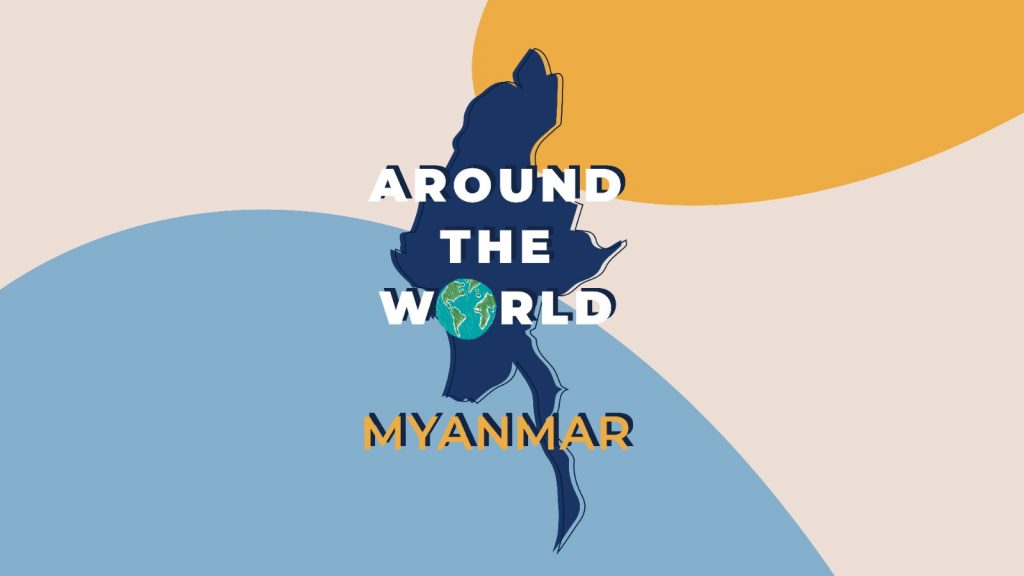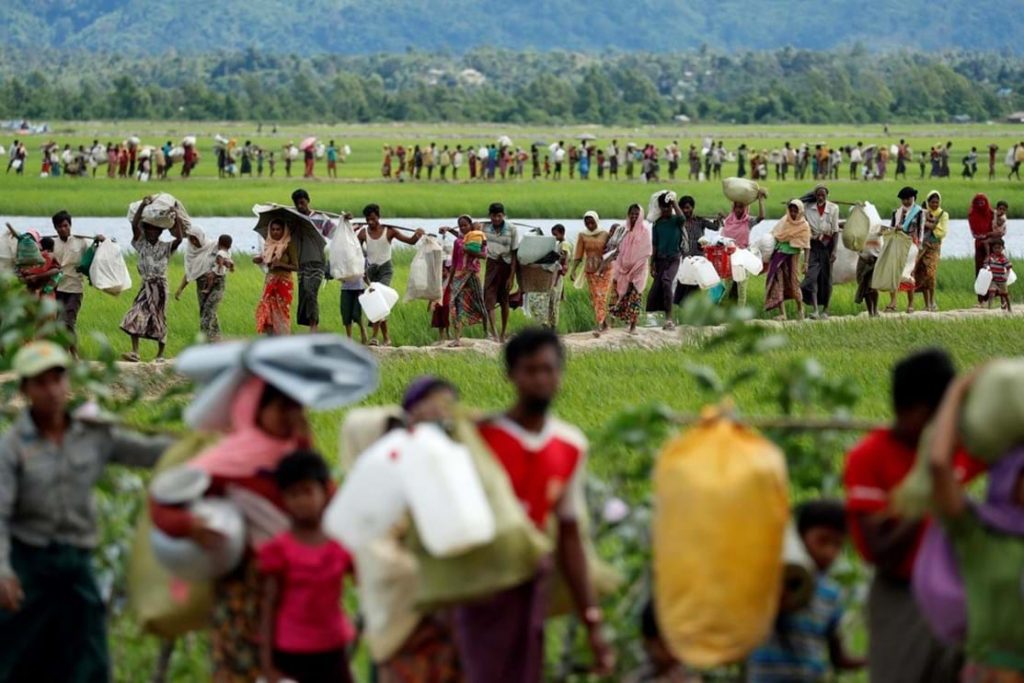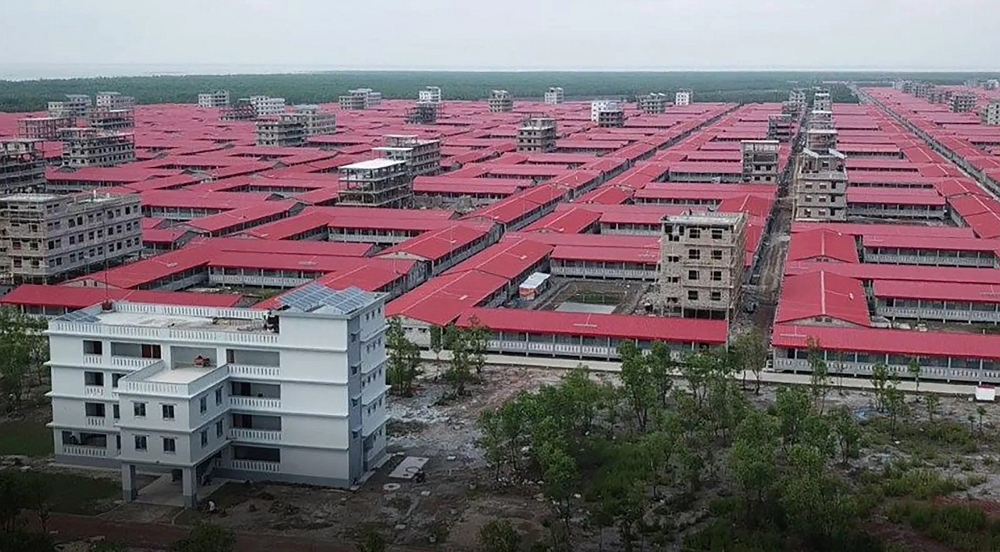Around the World: What's Going On in Myanmar?
This is a part of our series “Around the World”, where we analyse political, social and economic issues from countries often times set aside on the news.

The 2021 military coup has aggravated an already unstable context. Myanmar faces a conflict between its military junta and an armed insurgency against it, where everyone faces a risk of inflamed violence, especially those who were already victims. The discrimination against the Muslim-minority Rohingya continues, which, according to the United Nations, are “the most persecuted minority in the world”.
Myanmar, formerly known as Burma, is a country in Southeast Asia with a population of more than 50 million of which 87% are Buddhist. It is surrounded by India and Bangladesh (currently holding the largest refugee camp in the world due to Rohingya fleeing Myanmar), China, Laos and Thailand.
The country’s capital city is Naypyidaw. Largest city: Yangon.
Rohingya, most persecuted minority in the world
Rohingya are a Muslim ethnic minority – in 2014, only about 2.3% of the country’s population practised Islam – which is not recognised by the government. This implies that the Rohingyas have been denied citizenship for the past decades (1982), making them the world’s largest stateless population while facing violence and discrimination in the country they inhabit.
This is an old conflict. During World War II, the Rohingya Muslims allied with the British in exchange for a Muslim state and fought the Rakhine Buddhists allied with the Japanese. Buddhists led the union government of 1948, which established Rohingyas as a target.
Rakhine is a state on the western coast where the majority of the conflict has unfolded. On 25 August 2017, Rohingya insurgents attacked more than 30 police posts in northern Rakhine. This caused a brutal counterattack by the Burmese forces and Buddhist groups that burnt down villages and attacked and killed Rohingya civillians.
More than 910 000 Rohingyas have sought refuge in Bangladesh, especially after the August 2017 violence, when thousands of families were separated or killed and extensive other human rights violations were reported. 75% of Rohingya refugees arrived in Kutupalong and Nayapara refugee camps in September 2017.
But Bangladesh isn’t a safe harbour. The South Asia country faces an impactful monsoon season with heavy rains and winds. As the Rohingya shelter in precarious conditions, their makeshift homes suffer and they are exposed to risks such as landslides and diseases. In July 2021, six Rohingya refugees died and more than 13 000 shelters were damaged or destroyed.

Military coup and an upcoming civil war
Rohingyas are a persecuted minority and one that rings all bells when it comes to refugees. But all of Myanmar’s population has been suffering from the latest political happenings. Myanmar has been brimming with violence and around 1.1 million people are internally displaced.
On the first of February 2021, Myanmar’s military – Tatmadaw – deposed the elected members of the country’s ruling party, the National League for Democracy (NLD). Tatmadaw then implemented a military junta and declared the election results of 2020 invalid (with promises of a new election after a year-long state of emergency that has not occurred since the state of emergency has been extended ever since). Acting president Myint Swe transferred power to Commander-in-Chief of Defense Services Min Aung Hlaing.
Three months later, in May, there was an armed insurgency against the Tatmadaw-ruled government. The People’s Defense Force (PDF) counterattacked the military, which was then smothering protests that erupted just a week after the military took control.
As of June 2022, more than 2 thousand civillians, including children, have been killed by the junta and around 10 thousand arrested. Myanmar seems to be on the brink of a civil war, and has been described as such by the UN Human Rights chief.
The new normal
This is specially important since the military coup propelled a mass boycott of schools. More than 100 000 teachers were on strike and children didn’t attend for safety reasons. Only 10% of eligible students enrolled in the government schools in June.
“We are afraid that a bomb will drop on our school while we are teaching”, said Khu Oo Reh, a teacher in Demoso township in southeastern Karenni State, also known as Kayah State. “When we hear bombing or shooting in the distance, it gives us a chill and unsafe feeling, but we have to continue teaching for the children’s education and future.”

Part of the solution or part of a bigger problem?
Bhasan Char is an island in Bangladesh of 65km2 where the government intends to relocate around 100 000 Rohingya refugees from the camps of Cox’s Bazar. The purpose, they say, is to allow for better conditions for the refugees and fight the overcrowdness of the existing camps. The proposal was first presented in 2015, receiving opposition from human rights groups.
Nonetheless, in May 2021, at least 28 000 Rohingya lived on the island. They are allowed to work, but not to leave the island. Some say they were coercerd, some say they requested it.
The controversy around it has hindered effective help. Some donors and international aid groups are still unsure whether the island can be a solution and can provide a temporary solution for refugees, with better living conditions as compared to the deterioration of mainland camps, or if it is a “prison” that accentuates exclusion. Many say that the United Nations shouldn’t operate on Bhasan Char until Free Movement is assured. In August 2021, a boat with more than 40 refugees capsized while trying to flee the island, killing 11 people.